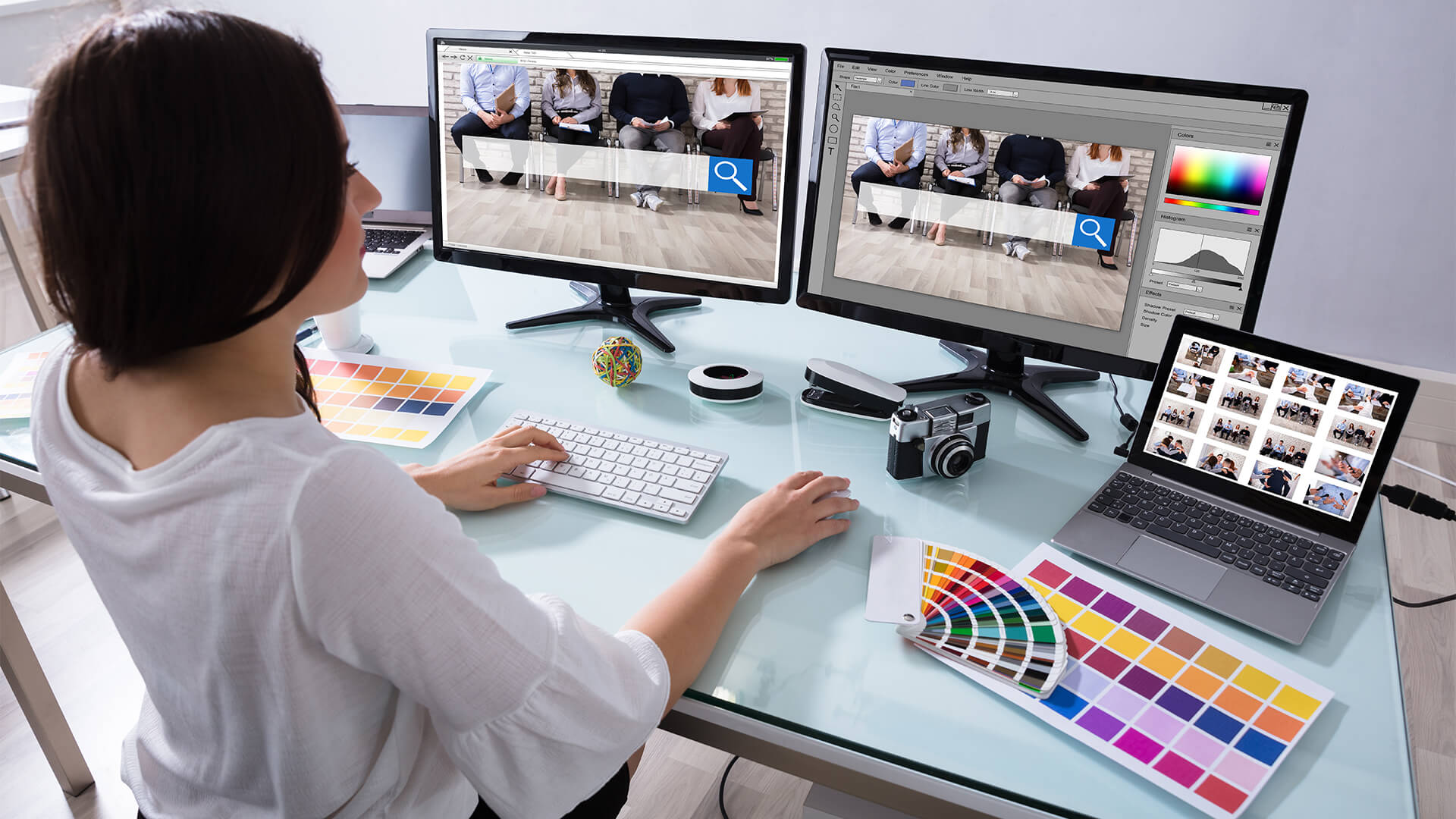Master the Art of Web Design With These Specialist Idea
In today's electronic age, having a visually appealing and properly designed site is essential for any type of service or individual looking to make a mark online. In this discussion, we will certainly explore professional ideas and methods that will not just improve the aesthetic allure of your website however additionally improve its functionality and performance. From choosing the ideal shade combination to incorporating reliable call-to-actions, these understandings will help you create a website that not just mesmerizes your target market yet additionally drives outcomes.
Selecting the Right Color Combination
When selecting a color palette for web design, it is important to think about elements such as brand name identity, target audience, and overall visual goals. The shades used in a website can greatly affect how customers view and engage with the website.
Along with brand identity, the target audience ought to also be thought about when choosing a color combination. Different age teams and demographics might respond in a different way to certain shades. More youthful target markets might be extra brought in to dynamic and bold shades, while older audiences may choose much more soft and advanced tones. Understanding the preferences and expectations of the target audience can help create a engaging and visually appealing website.
Last but not least, the total visual objectives of the website need to be thought about when picking a color palette. The shade system must match the general layout and format of the site, creating a cohesive and visually appealing experience for users. Whether the goal is to develop a tranquil and soothing atmosphere or an energetic and vibrant environment, the shade combination ought to be very carefully picked to attain the wanted visual.

Creating User-Friendly Navigation
To enhance the user experience, it is vital to develop user-friendly and easy-to-navigate menus for sites. User-friendly navigation is essential for directing visitors through the numerous areas and web pages of a web site, enabling them to rapidly find the content they are looking for. When making the navigating food selection, simplicity is key. Stay clear of littering the food selection with as well several choices, as this can overwhelm users and make it difficult for them to make decisions. Rather, emphasis on supplying clear and succinct tags for every menu thing, making use of acquainted terminology that users can easily understand.

Along with clear tags and logical organization, it is very important to make the navigation food selection quickly available. Put it in a famous place, such as on top of the web page or in a fixed position, so that customers can conveniently discover and access it from anywhere on the site. Consider using a receptive style method to ensure that the navigating food selection remains obtainable and functional on different tools, including mobile phones and tablet computers.
Integrating Responsive Layout Methods
In order to optimize internet site performance across numerous devices, incorporating receptive design strategies is crucial. Receptive design is a website design method that permits web sites to adapt and react to various display sizes and positionings. With the raising usage of smartphones and tablet computers, it is vital for web designers to produce sites that supply an ideal watching experience for individuals on all gadgets.
Among the key techniques in receptive style is the use of liquid grids. As opposed to developing fixed-width formats, web developers produce flexible grids that resize and change based upon the display size. This guarantees that the web content on the web site stays readable and easily accessible, despite the device being made use of.
Another vital strategy is using adaptable pictures and media. By setting the optimum size of images and videos to 100%, they will instantly scale down to fit smaller sized screens. This protects against images from being cut off or distorted on smart phones.
In addition, receptive layout involves utilizing media questions to apply different styles and formats based upon the gadget's screen size. This permits internet important source developers to create a smooth experience by customizing the presentation of material according to the device being utilized.
Optimizing Site Speed and Performance
One crucial element of web design is enhancing web site rate and performance. A slow website can lead to a poor user experience, high bounce prices, and reduced search engine rankings.
To start with, optimizing pictures is important for boosting site rate. Photos need to be correctly pressed and resized to decrease their file dimension without sacrificing top quality. This can be done using photo optimization tools or plugins.
Another crucial factor to think about is internet site caching. Caching entails saving static variations of website to make sure that they can be rapidly fetched rather than creating them from scrape each time an individual checks out the site (Webwize Tomball Web Developer). This dramatically reduces filling times and improves overall efficiency
Minifying look at here CSS and JavaScript files is another effective technique. Removing unneeded whitespace, remarks, and lowering code complexity can substantially boost site rate.
Carrying Out Effective Call-to-Actions
Developing engaging and convincing call-to-actions is a critical aspect of reliable website design. A call-to-action (CTA) is a timely or instruction that urges customers to take a specific activity on an internet site, such as purchasing, enrolling in a newsletter, or contacting the business. Applying efficient CTAs can significantly improve individual involvement and conversion rates.
To create engaging CTAs, it is very important to utilize clear and concise language that conveys the worth proposition and benefits of taking the wanted activity. The CTA needs to be aesthetically famous on the web page, utilizing contrasting design and colors elements that attract the customer's focus. Furthermore, utilizing action verbs and creating a feeling of necessity can better improve the efficiency of the CTA.
Additionally, it is essential to position the CTA strategically on the page. Putting it above the layer, where it is promptly visible to customers without needing to scroll, can significantly raise its presence and click-through rates. It is also beneficial to examine different variations of CTAs to establish which ones reverberate best with customers and drive the highest possible conversion rates.
Conclusion
In verdict, grasping the art of website design needs attention to different elements such as shade combination option, straightforward navigation, receptive layout techniques, web site speed optimization, and reliable call-to-actions. By executing these expert ideas and tricks, web designers can produce visually attractive and useful internet sites that improve user experience and drive preferred activities.
The colors made use of in a web site can significantly affect exactly how article users interact and perceive with the website.In order to enhance site performance throughout different tools, incorporating receptive design methods is essential. Responsive layout is a web style strategy that allows web sites to adjust and respond to different screen dimensions and alignments. With the enhancing use of smart devices and tablet computers, it is vital for web designers to develop web sites that provide an optimum viewing experience for users on all gadgets.
